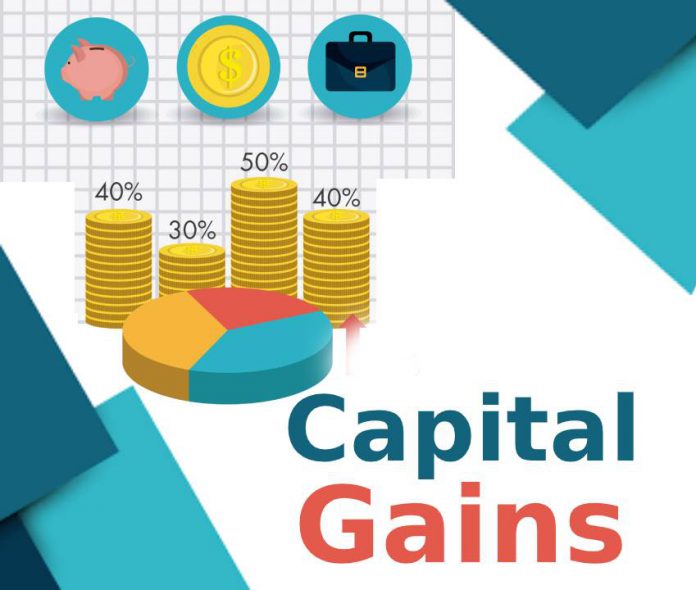Know About The Capital Gains Tax India
- What is Capital Gains?
- Kinds of Capital Gains
- How to calculate capital gains?
- Cost of Improvement
- Acquisition Cost
- Full Value Considerations
- How to calculate Long Term Capital Gains
- Let us take an example for the long term capital gains profit
- What about the calculation of short term capital gains
- Let us take an example to calculate the short term capital gains
- The income tax rate for long term capital gains
- The income tax rate for short term capital gains
- Cost Inflation Index Number
- Indexed Cost of Improvement and Acquisition
- The formula for calculation of indexed tax for improvement
- The formula for calculation of indexed tax for acquisition
What is Capital Gains?
The tax levied on the long term or short term basis with the gains start at 10% to 15%. By the sales or purchase of the capital assets, the profit received is known as the capital gains. The profit you gain from the sales and purchase of the capital assets also come under the income category. That is why the income taxpayer has to pay the income tax amount on that profit as well. The tax which is paid on the capital gains is known as capital gains tax. The capital gains tax can be for short term or long term periods.
There is no need to pay capital gains tax in India under the Income Tax Act if in case the person inherits the property, plus there are no sales at all. If any individual inherited any property, and he decided to sell it, then the amount received from the sale, one has to pay income tax on that income. From the income, which has been generated from the sale, the income tax has to be paid on that amount. The kind of capital assets which are included for capital gains and capital gains tax India are; jewellery, leased property rights, trademarks, machinery, patents, house property, building, vehicles, and on land
Kinds of Capital Assets:
Now, let us know about the types/ kinds of capital assets. There are two types of capital assets; the first one is long term capital assets, and the second one is short term capital assets.
Long Term Capital Gains:
If in case, any person avails a property for more than 36 months, that assets are known to be as a long term capital gains. We can take examples of jewellery, debt-oriented mutual funds, which requires to be held for 36 months, which comes under the category of long term capital assets. Plus, there is one more thing to be noted that, there is no reduction of 36 months under any circumstances to attain the long term capital gains. In the case of long term gains, one has to pay long term capital gains tax, which is mandatory.
Here right below, a few assets are mentioned, which are considered as the long term capital assets, if held for more than 12 months:
- The Zero-Coupon Bonds (not dependent, either they are quoted or not)
- Unit Trust of India (UTI) Units (not dependent whether quoted or not)
- The Mutual Funds Units based on equity (the same, does not reliant on, whether they are quoted or not)
- All the securities, which are listed on the stock exchange recognized in India. A few examples of the securities are; debentures, bonds, and government securities.
- The equity and preference shares, which are listed in the stock exchange of any company that should be recognized in India.
Short Term Capital Gains:
In the case of short term capital gains, the assets to be held for 36 months or less than this period. Now the assets like house property, building; the period reduced by 24 months from 36 months.
That is why, if in case an individual holds any land, building, or house property for 24 months, he will be attaining the profit of capital gain, which is to be made in the case of long term capital assets.
In this case, when the property is inherited or received from anyone as a gift, then the period in which the old owner holds the property is also considered.
When it comes to determining the category, in which the right or bonus shares fall, it is considered on the date when the bonus shares were allotted. One has to pay short term capital gains tax on the profit they received from the short term assets.
How to Calculate Capital Gains?
It is dependent upon the measure of time that the advantage has been held, the computation of Capital Gains will fluctuate. A portion of the significant focuses that people should realize while computing capital additions are referenced beneath:
Cost of Improvement
One of the chances that any costs have been brought about by the merchant in light of any modifications or increases that have been made to the property. Notwithstanding, any upgrades made before 1 April 2001 can’t be considered.
Acquisition Cost
Money, which the seller paid to receive the property.
Full Value Considerations
The measure of cash that the dealer will get on account of the property move. Capital increases are charged from the year the exchange was made regardless of whether the cash was not received in that specific year.
In specific situations where the capital resource is additionally the property of the citizen, the obtaining cost and the improvement cost of the past proprietor will likewise be incorporated.
How to calculate Long Term Capital Gains?
If anyone wants to calculate the long term capital gains, here the procedure is mentioned below:
- Consider the full value of the asset
- Make a few deductions later on, such as money spent on acquisition, money incurred because of the transfer, money spent on improvement
- The amount, which is calculated from the steps mentioned above, now the exemptions are needed to be deducted, which comes under section 54B, Section 54F, and Section 54
Let us take an example for the long term capital gains profit:
House purchased at Rs.30 lakh
Financial Year house was purchased: 2010-2011
Financial Year house was sold: 2018-2019
Amount house was sold for Rs.50.5 lakh
Inflation-adjusted cost: (280/167) x 30 = 50.29 lakh
Long term Capital Gains: 50.50 lakh – 50.29 lakh = Rs.21,000 (approx)
What About The Calculation of Short Term Capital Gains:
To calculate the short term capital gains, here the procedure is mentioned below:
- Consider the full value of the property
- Deduct a few amounts, which are expenses made on the improvement of the property, expenses made to receive the property, and for the transfer of the property
- The amount of short term capital gains is to be calculated after making the appropriate deductions
This is how the individual can calculate the value of their short term capital gains.
Let us take an example to calculate the short term capital gains:
Price the house was sold for: Rs.55 lakh
Expenses for brokerage, commissions, etc.: Rs.30,000
Net sale consideration: Rs.54,70,000
Price the house was bought for Rs.35 lakh
Amount spent for the improvement of the house: Rs.3 lakh
Gross short term Capital Gain: Rs.16,70,000
Tax exemptions under Sections 54, 54B, 54D, 54EC, 54ED, 54F, 54G: Nil
Net short term Capital Gain: Rs.16,70,000
Short Term Capital Gains: 30% of Rs.16,70,000: Rs.5,01.000
The Income Tax Rate for Long Term Capital Gains:
| Condition | Tax Rate |
| Sale of equity shares | 10% of the amount which is more than Rs.1 lakh |
| Except for sale of equity shares | 20% |
The Income Tax Rate for Short Term Capital Gains:
| Condition | Tax Rate |
| When the transaction tax is based on securities | 15% |
| When transaction tax is not based on securities | The gain is added to the income tax return that must be filed, and the amount will be based on the income tax slab |
Cost Inflation Index Number
| Financial Year | Assessment Year | CII Number |
| 2001-2002 | 2002-2003 | 100 |
| 2002-2003 | 2003-2004 | 105 |
| 2003-2004 | 2004-2005 | 109 |
| 2004-2005 | 2005-2006 | 113 |
| 2005-2006 | 2006-2007 | 117 |
| 2006-2007 | 2007-2008 | 122 |
| 2007-2008 | 2008-2009 | 129 |
| 2008-2009 | 2009-2010 | 137 |
| 2009-2010 | 2010-2011 | 148 |
| 2010-2011 | 2011-2012 | 167 |
| 2011-2012 | 2012-2013 | 184 |
| 2012-2013 | 2013-2014 | 200 |
| 2013-2014 | 2014-2015 | 220 |
| 2014-2015 | 2015-2016 | 240 |
| 2015-2016 | 2016-2017 | 254 |
| 2016-2017 | 2017-2018 | 264 |
| 2017-2018 | 2018-2019 | 272 |
| 2018-2019 | 2019-2020 | 280 |
Indexed Cost of Improvement and Acquisition
The cost that is brought about on progress and securing is ordered with the fundamental point of altering for the number of years the property was held. This diminishes capital gains as well as expands the cost base.
The Formula for Calculation of Indexed Tax for Improvement:
The costs for development x Cost Inflation Index (CII) for the year the property was sold partitioned by the CII of the year the improvement happened.
The Formula for Calculation of Indexed Tax for Acquisition:
The absolute costs brought about for securing x CII of the year the property was sold isolated by the CII of the year the property was at first procured by the dealer (or 2001-2002 whichever is later).





















informative. would recommend this to my son
You could certainly see your expertise in the article
you write. The world hopes for more passionate writers such
as you who are not afraid to say how they believe. At all times follow your heart.
Thank you for this post. Its very inspiring.
Thanks! And thanks for sharing your great posts every week!
Thanks! And thanks for sharing your great posts every week!buy generic cialis
Informative post
Amazing post.
I am really delighted to read this webpage posts which includes tons of
useful facts, thanks for providing such statistics.
Thanks for sharing your thoughts on capital gains tax.
Regards
This is very interesting, You’re a very skilled blogger.
I have joined your feed and look forward to seeking more of your fantastic post.
Also, I have shared your web site in my social networks!
Attractive component to content. I just stumbled upon your blog and in accession capital to
assert that I get in fact loved account your blog posts.
Anyway I’ll be subscribing for your augment and even I
achievement you get admission to consistently fast.